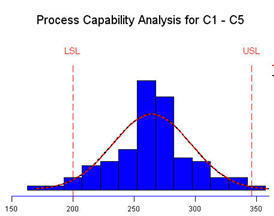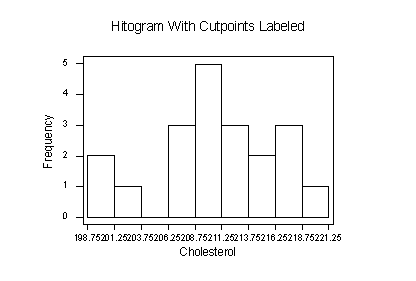

Assumptions #3, #4, #5, #6 and #7 are explained below: However, there are possible solutions to correct such violations (e.g., transforming your data) such that you can still use a linear regression. In fact, do not be surprised if your data violates one or more of these assumptions. You have to check that your data meets these assumptions because if it does not, the results you get when running a linear regression might not be valid. In this guide, we show you the linear regression procedure and Minitab output when both your dependent and independent variables were measured at the continuous level.Īssumptions #3, #4, #5, #6 and #7 relate to the nature of your data and can be checked using Minitab. In case you are unsure, examples of categorical variables include gender (e.g., two groups: male and female), ethnicity (e.g., three groups: Caucasian, African American and Hispanic), physical activity level (e.g., four groups: sedentary, low, moderate and high), and profession (e.g., five groups: surgeon, doctor, nurse, dentist, therapist). However, if you have a categorical independent variable, it is more common to use an independent t-test (for two groups) or one-way ANOVA (for three groups or more). Assumption #2: Your independent variable should be measured at the continuous or categorical level.If you are unsure whether your dependent variable is continuous (i.e., measured at the interval or ratio level), see our Types of Variable guide. Examples of such continuous variables include height (measured in feet and inches), temperature (measured in ☌), salary (measured in US dollars), revision time (measured in hours), intelligence (measured using IQ score), firm size (measured in terms of the number of employees), age (measured in years), reaction time (measured in milliseconds), grip strength (measured in kg), power output (measured in watts), test performance (measured from 0 to 100), sales (measured in number of transactions per month), academic achievement (measured in terms of GMAT score), and so forth.

Assumption #1: Your dependent variable should be measured at the continuous level (i.e., it is an interval or ratio variable).Assumptions #1 and #2 are explained below: If these assumptions are not met, there is likely to be a different statistical test that you can use instead. However, you should check whether your study meets these assumptions before moving on. You cannot test the first two of these assumptions with Minitab because they relate to your study design and choice of variables.

However, before we introduce you to this procedure, you need to understand the different assumptions that your data must meet in order for linear regression to give you a valid result.
#Minitab histogram how to
In this guide, we show you how to carry out linear regression using Minitab, as well as interpret and report the results from this test. If your dependent variable is dichotomous, you could use a binomial logistic regression. Alternatively, if you just want to establish whether a linear relationship exists, but are not making predictions, you could use Pearson's correlation. Note: If you have two or more independent variables, rather than just one, you need to use multiple regression. Alternatively, you could use linear regression to understand whether cholesterol concentration (a fat in the blood linked to heart disease) can be predicted based on time spent exercising (i.e., the dependent variable would be "cholesterol concentration", measured in mmol/L, and the independent variable would be "time spent exercising", measured in hours). We will refer to these as dependent and independent variables throughout this guide.įor example, you could use linear regression to understand whether test anxiety can be predicted based on revision time (i.e., the dependent variable would be "test anxiety", measured using an anxiety index, and the independent variable would be "revision time", measured in hours). The dependent variable can also be referred to as the outcome, target or criterion variable, whilst the independent variable can also be referred to as the predictor, explanatory or regressor variable. Linear regression, also known as simple linear regression or bivariate linear regression, is used when we want to predict the value of a dependent variable based on the value of an independent variable. Linear regression using Minitab Introduction


 0 kommentar(er)
0 kommentar(er)
